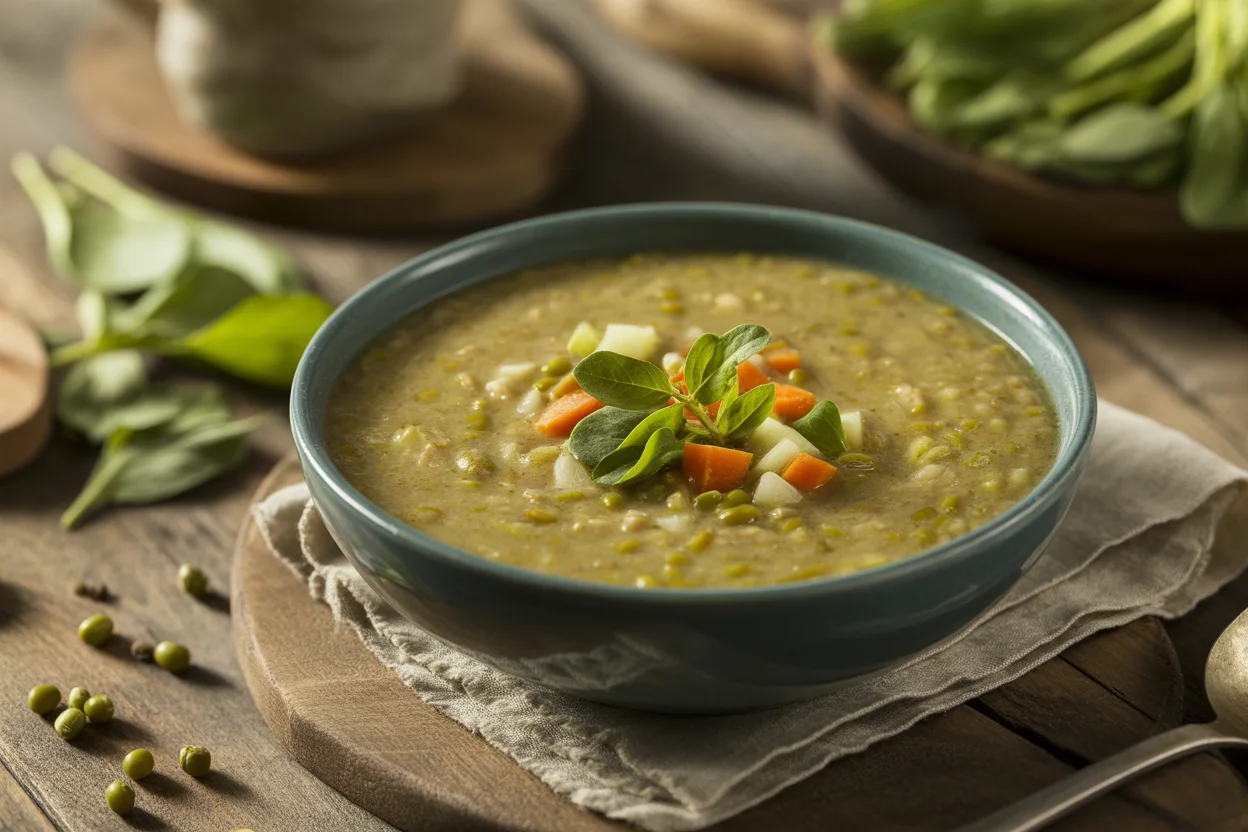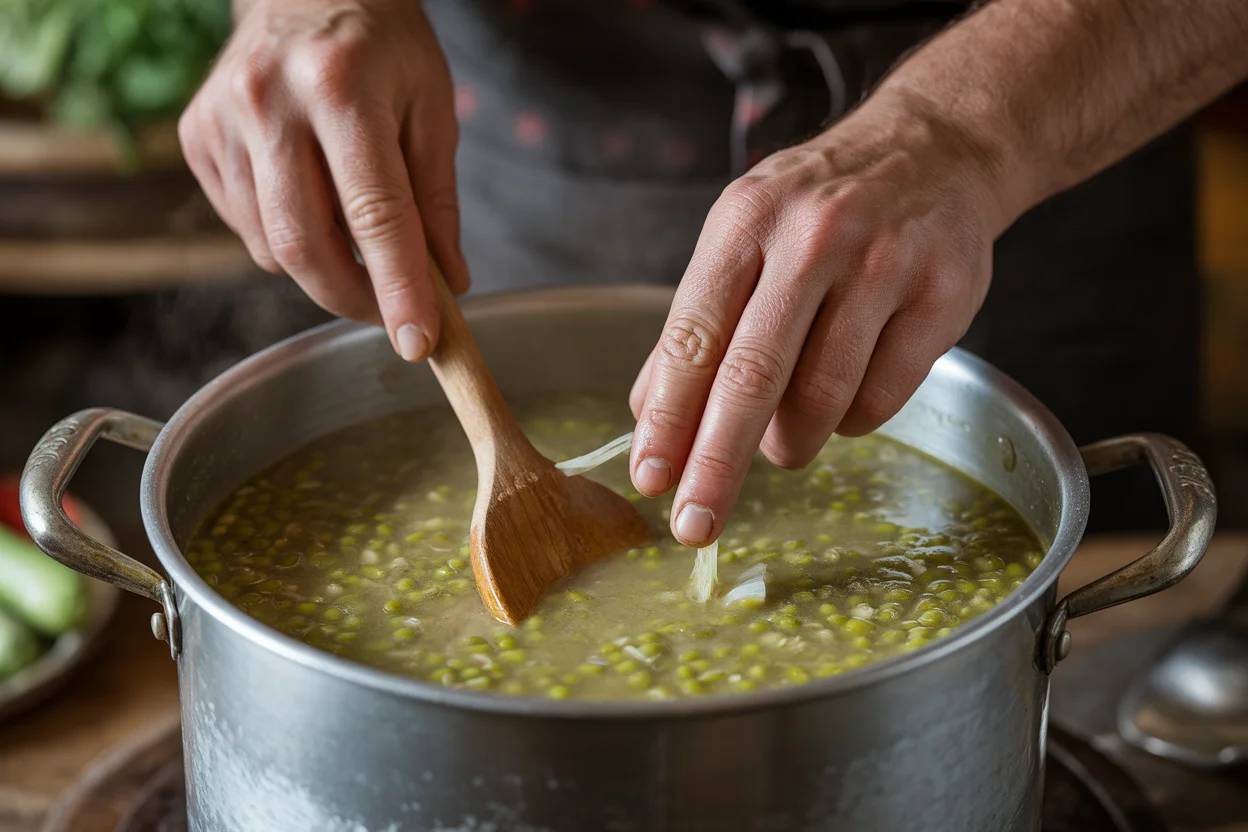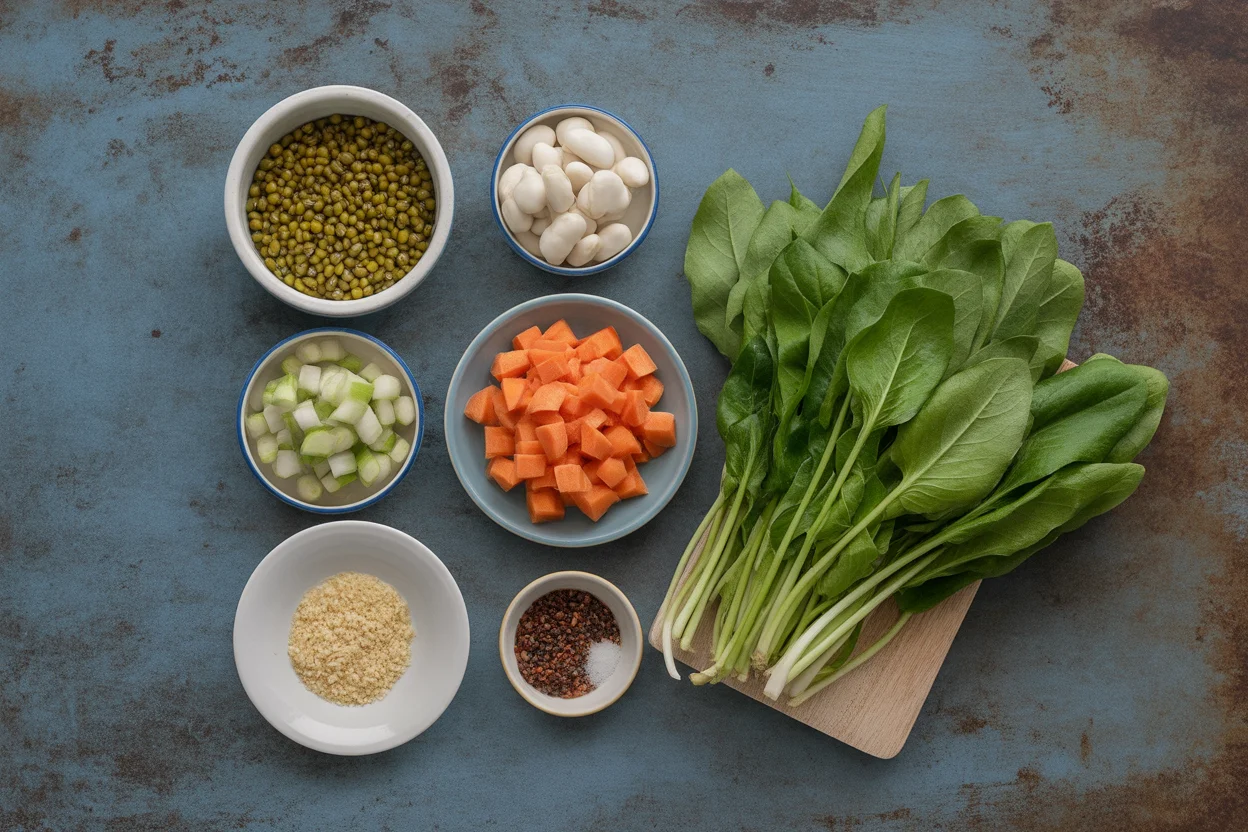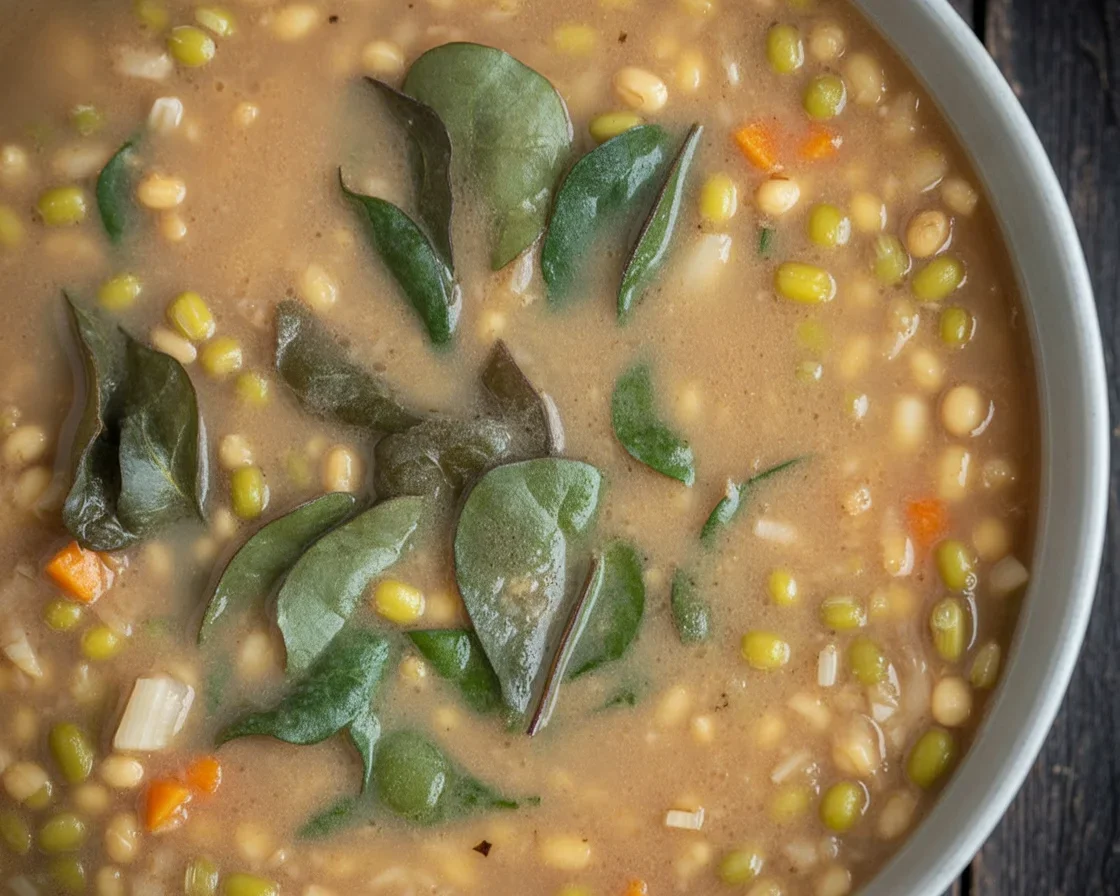- Introduction to ginisang munggo
- Preparing mung beans
- Cooking aromatics
- Adding vegetables
- Serving
- Variations
- Health benefits
- Common Questions
- Why You Need to Try This Recipe Now
Filipino ginisang munggo always reminds me of those days when you open the fridge, spot some random veggies left over, and think, “Yeah, that’s dinner.” Ever have those weeks when you want something healthy that still makes you feel stuffed and cozy inside? I swear, ginisang munggo nails that craving every time. Plus, if you want to give it a healthy boost, you really should check out this awesome munggo with malunggay leaves—or, if your household has picky eaters like mine (my little nephew won’t touch veggies unless they’re practically invisible), these kid-friendly Filipino recipes can save you. Now, let’s jump into my ginisang munggo ritual—may as well call it an obsession, honestly.

Introduction to ginisang munggo
Let’s kick it off with the basics. Ginisang munggo is a down-home Filipino mung bean stew. This dish is pure comfort—like wrapping yourself in a warm blanket, but edible (and tastier). People go wild for this every Friday back home. Some say that’s a Catholic tradition. Me? I just love an excuse to eat it. Ginisang munggo is often loaded with leafy greens, bits of pork (or shrimp, or just veggies if that’s how you roll), and a garlicky, oniony broth that’s savory enough to want seconds. And yes, you want to eat this with rice. Trust me. A big scoop of garlic rice on the side is downright magical. Also, it stretches leftovers so well—budget win!
I think what makes ginisang munggo pop is that feeling of home. Growing up, my lola would scoop up a big bowl, and the smell would have the whole family crowding around the table before she even called us. It’s one of those humble dishes that’ll make you remember to slow down and just enjoy a simple meal.

Preparing mung beans
You can’t rush this step, but seriously, don’t stress. First, grab your mung beans. Sort out any weird pebbles (I’ve only found a pebble twice, but wow, that ruined a bite). Rinse the beans well under the tap. I like to soak mine for at least an hour, sometimes even overnight if I’m feeling prepared. It makes ’em cook faster and get extra creamy-mushy.
After soaking, drain the water and throw your beans into a pot. Cover with new water—use more than you think. Sometimes they expand like no tomorrow. Boil them gently with the lid halfway off. You want them just tender, not complete mush. Too soft? Hey, still delicious, but it’ll turn into a thick porridge instead of a stew. If you need more healthy Filipino meals, the healthy Filipino recipes page always gives me new ideas for my weekly meal prep.
If you’re not soaking overnight, no drama. Just boil a bit longer. Maybe add a pinch of salt, or don’t—it’s not a deal breaker. You do you, friend.

Cooking aromatics
Alright, aromatics are what make ginisang munggo so tasty you’ll want to eat it straight out of the pot. Heat a splash of oil in a big pan, or whatever’s clean. Toss in chopped garlic, onion, and a tomato. I use a ridiculous amount of garlic—like, six or eight cloves. My family’s immune systems must be invincible by now. Fry the onion, garlic, and tomato until soft and fragrant. Some people like to add a little ginger if they want extra zing.
Here’s where you can toss in pork belly, shrimp, or even some tinapa (smoked fish)—makes ginisang munggo deeper in flavor. That sizzle when pork cubes hit hot oil? It’s my favorite kitchen sound. Once the protein is browned a bit and smells kind of irresistible, add your cooked mung beans with some liquid. Get all those bits from the bottom of the pan—flavor jackpot.
I always season with a bit of fish sauce for classic Pinoy taste. If you like it spicy, throw in a piece of chili at this stage, too. You won’t regret it.
Adding vegetables
Veggie time! This part is where everyone does their own thing. Malunggay leaves are traditional (pick them off the tough stems), but I’ve used spinach or even kangkong when that’s all I can find at the market. Bitter melon (ampalaya) brings a bit of a punch—like a wakeup call for your taste buds. Are your kids skeptical of green things? Sneak them in anyway, I say. I sometimes shred carrots or drop in a handful of squash cubes, too.
Add the veggies towards the end, because they cook fast and you don’t want limp, sad greens. I’ve made that mistake, trust me. Just stir the leaves in and let them wilt. That’s it. Quick and pretty much impossible to mess up. Some of my friends swear by adding a sprinkle of chicharon (fried pork skin) on top, and let me tell you—it’s a five-star restaurant experience in a humble bowl.
If you need ideas on what to do with bitter melon left over, this ginisang ampalaya recipe is actually pretty brilliant.
Serving
You got your pot of ginisang munggo bubbling and ready. But how do you serve it, so it’s not just soup night again? Here’s what I do:
- Ladle ginisang munggo over steamed rice for that classic Filipino meal.
- Add a side of fish or fried garlic sinangag—honestly, I do this when I want to feel extra fancy.
- Top with a scoop of chicharon (for a salty crunch) or a chili pepper if you want a kick.
- Pair it with pickled veggies (atchara) or salty dried fish if your soul needs that little zing.
Honestly, leftovers even taste better the next day. The flavors somehow mingle together overnight in the fridge. Don’t ask me why—it’s magic.
“This ginisang munggo recipe saved me when I had only basic pantry staples. It seriously tasted like home, and my husband asked for seconds—and thirds!” – Jenny, busy mom of two
Variations
You can riff on ginisang munggo a hundred ways, not kidding. Feeling meatless? Go all-veggie with lots of green leaves, and skip the pork. Want it richer? Coconut milk makes the stew extra creamy—though it’s not everyone’s cup of tea. I love adding tinapa flakes or dried shrimp when I want that salty, smoky flavor kick.
Maybe you have leftover lechon kawali from last night’s party (ha, right, as if there’s ever leftovers). Toss chunks in at the end—flavors = next level. Some days, I even stir in leftover adobo, so the sauce mixes with the beans. Speaking of adobo, if you wanna experiment, try these Filipino adobo variations—more options than your local turo-turo, I swear.
If you love playing with ingredients, try different greens, whatever is fresh and cheap. End result: just as filling, just as tasty.
Health benefits
Okay, let’s talk health perks, just to make you feel super smug about all the good stuff you’re eating. Mung beans are packed with protein and fiber—which means you stay full but not sleepy. Great for folks on a diet, trying to make their doctor happy, or just wanting to eat healthy-ish on a budget. Plus, greens like malunggay and spinach are loaded with vitamins.
If you put more veggies in, you get extra points for nutrition. The good thing is, you control how much fats go in—less oil, more leaves, your call. Truth be told, ginisang munggo with a simple side of rice is just about the healthiest Filipino comfort food there is.
I actually started making ginisang munggo more often when my cousin went vegetarian, and honestly, I never felt like I was missing out. Plus, prepping a big batch means lunch at work is sorted for days. Now, that’s saving time and money.
Common Questions
Can I use canned mung beans?
Sure, it works—just rinse them! Cook time’s quicker, but the flavor gets a little different. Still, not a crime if you’re in a rush.
What’s the fastest way to cook mung beans?
Skip soaking, go straight to boiling them until soft. Pressure cookers help if you’re impatient like me. They’ll be done in under 30 minutes.
What meat goes best with ginisang munggo?
Pork is classic (think belly or hock), but shrimp is awesome, too. Smoked fish is a fun twist if you want extra flavor.
Can I freeze ginisang munggo?
Absolutely. Let it cool first, freeze in batches. Just reheat and maybe add a dash of hot water to loosen things up.
Do I have to eat it with rice?
Technically, no. But why would you not? That’s the best part!
Why You Need to Try This Recipe Now
Alright, so you’ve got all the steps for ginisang munggo. It’s honest food. Fills your belly. Takes leftovers to superstar status. Oh, and feels like a hug from grandma after a long day. Seriously—give this a go. I found tips over at this Ginisang Munggo (Monggo) spot, and even a vegan twist on Ginisang Munggo (Filipino Mung Bean Soup)—so many ways to make it your own. If you try it, let me know how it goes—you might just find your new favorite weeknight meal!

Ginisang Munggo
Ingredients
Mung Bean Preparation
- 1 cup mung beans Rinse and soak for at least an hour or overnight.
Aromatics and Protein
- 6-8 cloves garlic, chopped Adjust based on taste preference.
- 1 medium onion, chopped
- 1 medium tomato, chopped
- 1-2 cups pork belly or shrimp (optional) Can be skipped for a vegetarian version.
- 1 tbsp fish sauce For seasoning.
- 1 piece chili pepper (optional) For spice.
Vegetables
- 2 cups malunggay leaves or spinach Pick the leaves off the stems.
- 1 cup carrots or squash (optional, cubed) Add for sweetness and texture.
- 1 cup bitter melon (optional) Add towards the end for flavor.
Rice and Toppings
- 5 cups steamed rice For serving.
- 1 cup chicharon (optional) For garnish.
Instructions
Preparation of Mung Beans
- Sort and rinse mung beans, then soak for at least an hour or overnight.
- Drain and place mung beans in a pot, cover with fresh water, and boil gently until tender.
Cooking Aromatics
- In a large pan, heat oil over medium heat and add garlic, onion, and tomato. Sauté until soft and fragrant.
- Add in pork or shrimp if using, and cook until browned.
- Incorporate cooked mung beans, adding some liquid from the pot, and season with fish sauce.
- If desired, add chili pepper for spice.
Adding Vegetables
- Stir in malunggay leaves (or spinach) and any additional vegetables, allowing them to wilt.
Serving
- Ladle ginisang munggo over a scoop of steamed rice and top with chicharon if desired.
- Serve with pickled veggies or fried garlic rice for an authentic experience.

